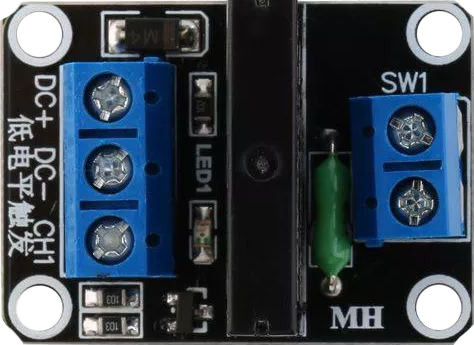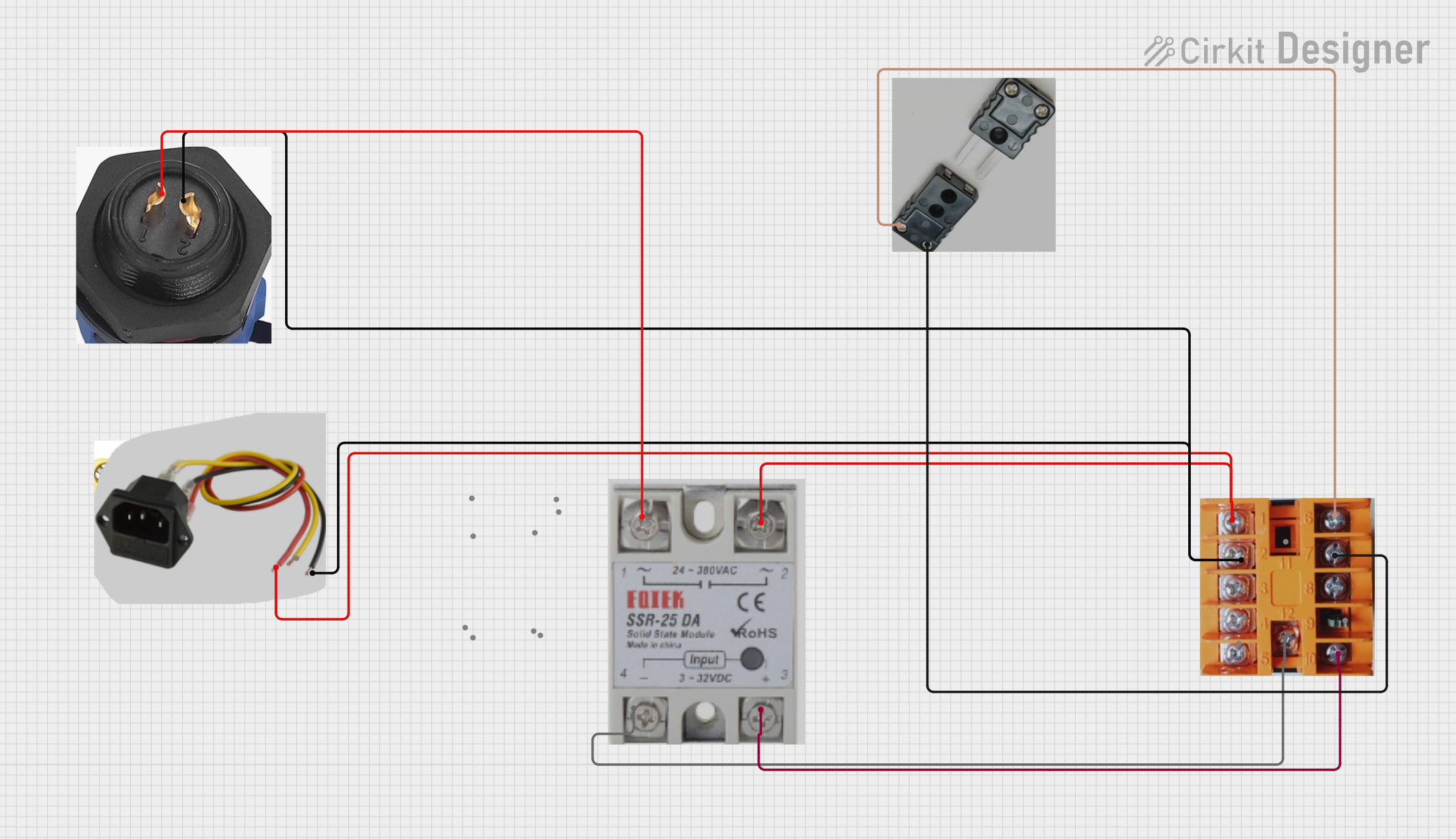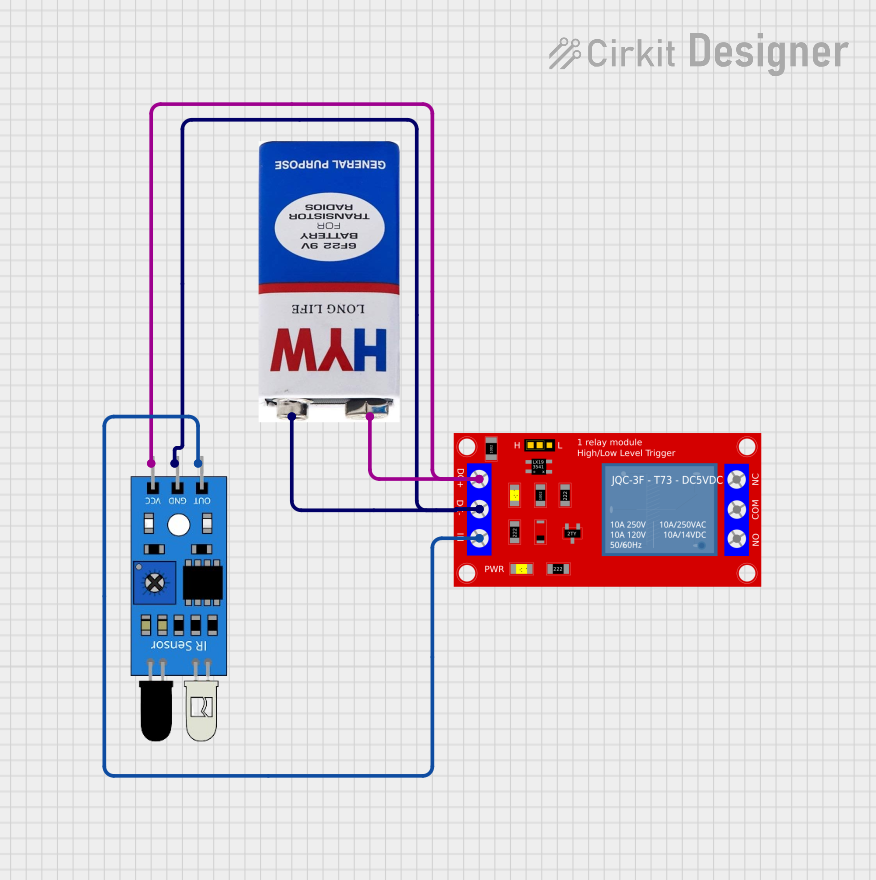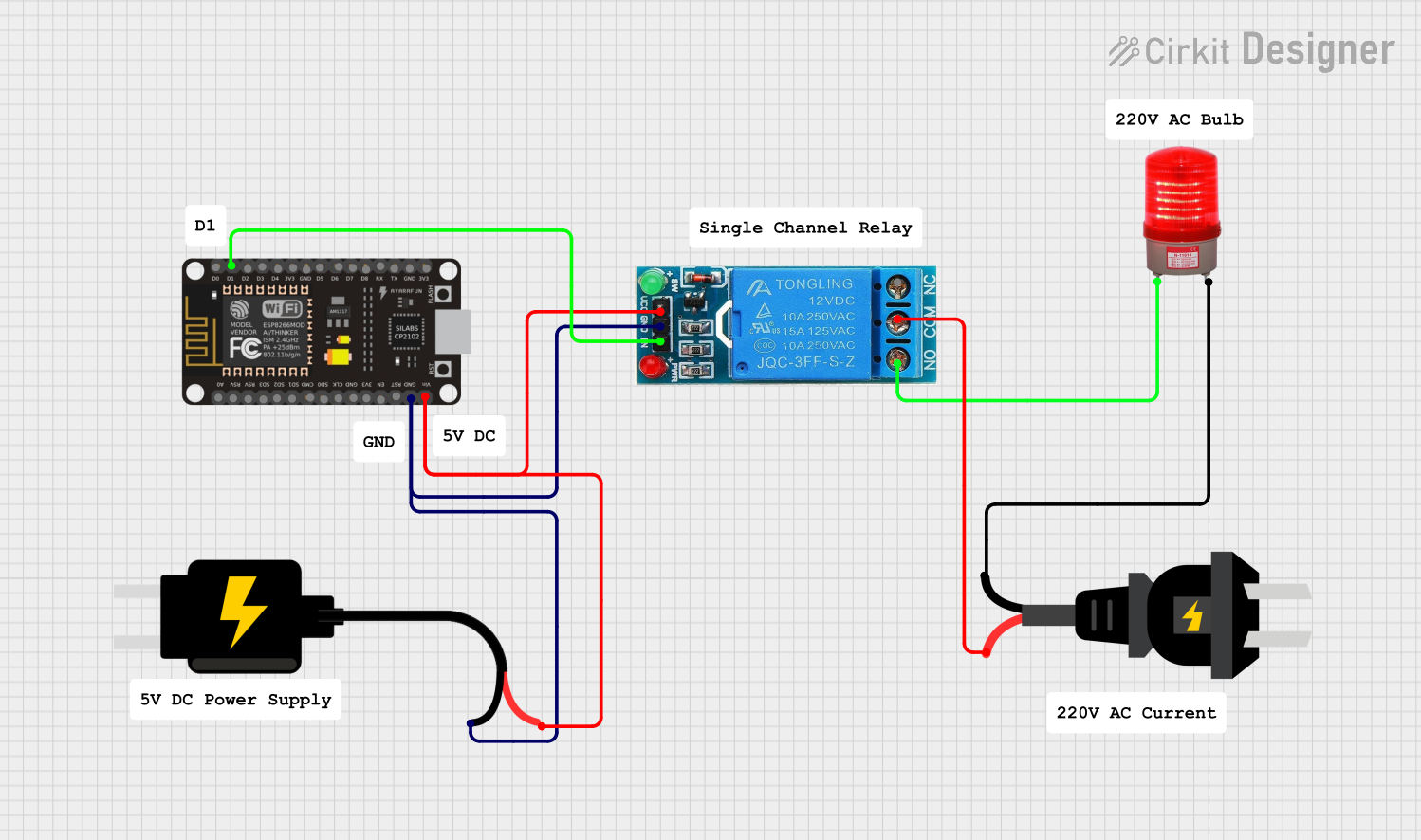
How to Use Solid State Relay 1x: Examples, Pinouts, and Specs

 Design with Solid State Relay 1x in Cirkit Designer
Design with Solid State Relay 1x in Cirkit DesignerIntroduction
A Solid State Relay (SSR) is an electronic component that switches electrical circuits on or off using semiconductor devices. Unlike mechanical relays, SSRs have no moving parts, which allows for faster switching, reduced noise, and increased lifespan. They are ideal for applications requiring precise control, such as in industrial automation, temperature control, and lighting systems.
Explore Projects Built with Solid State Relay 1x

 Open Project in Cirkit Designer
Open Project in Cirkit Designer
 Open Project in Cirkit Designer
Open Project in Cirkit Designer
 Open Project in Cirkit Designer
Open Project in Cirkit Designer
 Open Project in Cirkit Designer
Open Project in Cirkit DesignerExplore Projects Built with Solid State Relay 1x

 Open Project in Cirkit Designer
Open Project in Cirkit Designer
 Open Project in Cirkit Designer
Open Project in Cirkit Designer
 Open Project in Cirkit Designer
Open Project in Cirkit Designer
 Open Project in Cirkit Designer
Open Project in Cirkit DesignerTechnical Specifications
General Features
- Switching Type: AC or DC (depending on model)
- Control Voltage Range: Typically 3-32V DC
- Load Voltage Range: Typically 24-380V AC or similar range for DC models
- Load Current Rating: Commonly up to 25A (varies by model)
- Isolation Voltage: Typically >2000V
- Switching Speed: Instantaneous (milliseconds or less)
- Operating Temperature: -30°C to +75°C (varies by model)
Pin Configuration and Descriptions
| Pin Number | Description | Notes |
|---|---|---|
| 1 | Control Voltage (+) | Input from control circuit |
| 2 | Control Voltage (-) | Input from control circuit |
| 3 | Load Voltage (Line) | Connect to the load circuit |
| 4 | Load Voltage (Neutral/Return) | Connect to the load circuit |
Note: Pin numbers are for reference and may vary by manufacturer. Always consult the datasheet for exact pinout information.
Usage Instructions
Connecting to a Circuit
Control Circuit Connection:
- Connect the positive control voltage to Pin 1.
- Connect the negative control voltage to Pin 2.
Load Circuit Connection:
- Connect the line voltage of the load to Pin 3.
- Connect the neutral or return line of the load to Pin 4.
Best Practices
- Use a heat sink if the SSR is expected to handle loads near its maximum current rating.
- Ensure proper isolation between the control and load circuits.
- Use a snubber circuit across the load if inductive loads are switched to prevent voltage spikes.
- Always verify the SSR's load voltage and current ratings match the requirements of your application.
Example Code for Arduino UNO
The following example demonstrates how to control an SSR with an Arduino UNO:
// Define the SSR control pin
const int ssrPin = 7;
void setup() {
// Set the SSR pin as an output
pinMode(ssrPin, OUTPUT);
}
void loop() {
// Turn on the SSR (activate the connected load)
digitalWrite(ssrPin, HIGH);
delay(1000); // Keep the load on for 1 second
// Turn off the SSR (deactivate the connected load)
digitalWrite(ssrPin, LOW);
delay(1000); // Keep the load off for 1 second
}
Note: The control voltage for the SSR must be compatible with the Arduino output voltage (5V).
Troubleshooting and FAQs
Common Issues
- SSR does not switch on: Check the control voltage and connections.
- Load does not power on: Verify load connections and ensure the SSR's ratings match the load.
- SSR overheats: Ensure proper heat sinking and current ratings are not exceeded.
FAQs
Q: Can I use an SSR for both AC and DC loads? A: SSRs are typically designed for either AC or DC loads. Make sure to select the appropriate type for your application.
Q: How do I know if my SSR is functioning properly? A: Measure the control voltage across the SSR's input. When activated, the output should allow current to pass through to the load.
Q: Is it necessary to use a heat sink with an SSR? A: For high-current applications or prolonged use, a heat sink is recommended to dissipate heat and ensure longevity.
Q: Can I control an SSR with a microcontroller like an Arduino? A: Yes, as long as the control voltage is within the microcontroller's output range and the SSR's input range.
For further assistance, consult the manufacturer's datasheet and technical support resources.